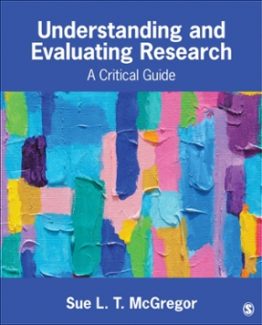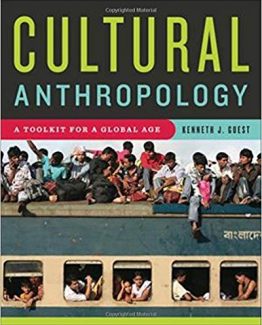The Organization of Information 4th Edition by Daniel N. Joudrey, ISBN-13: 978-1598848588
[PDF eBook eTextbook] – Available Instantly
- Publisher: Libraries Unlimited; 4th edition (November 27, 2017)
- Language: English
- ISBN-10: 1598848593
- ISBN-13: 978-1598848588
This fourth edition provides an updated look at information organization, featuring coverage of the Semantic Web, linked data, and EAC-CPF; new metadata models such as IFLA-LRM and RiC; and new perspectives on RDA and its implementation.
This latest edition of The Organization of Information is a key resource for anyone in the beginning stages of their LIS career as well as longstanding professionals and paraprofessionals seeking accurate, clear, and up-to-date guidance on information organization activities across the discipline. The book begins with a historical look at information organization methods, covering libraries, archives, museums, and online settings. It then addresses the types of retrieval tools used throughout the discipline―catalogs, finding aids, indexes, bibliographies, and search engines―before describing the functionality of systems, explaining the basic principles of system design, and defining how they affect information organization. The principles and functionality of metadata is next, with coverage of the types, functions, tools, and models (particularly FRBR, IFLA-LRM, RDF) and how encoding works for use and sharing―for example, MARC, XML schemas, and linked data approaches.
The latter portion of the resource describes specific activities related to the creation of metadata for resources. These chapters offer an overview of the major issues, challenges, and standards used in the information professions, addressing topics such as resource description (including standards found in RDA, DACS, and CCO), access points, authority control, subject analysis, controlled vocabularies―notably LCSH, MeSH, Sears, and AAT―and categorization systems such as DDC and LCC.
Table of Contents:
Cover
Half Title
Recent Titles
Title Page
Copyright
Contents
Preface
Acknowledgments
1 Organization of Recorded Information
The Need to Organize
The Nature of Information
The Nature of the Organization of Recorded Information
Organization of Information in Different Contexts
Libraries
Archives
Museums (Art and Object Collections)
Online Settings
The Internet
Semantic Web and Linked Data
Digital Collections
Information Architecture
Indexing and Abstracting
Indexing
Abstracting
Records Management
Personal Information Management
Knowledge Management
Conclusion
Notes
Suggested Readings
2 Development of the Organization of Recorded Information in Western Civilization
Inventories, Bibliographies, Catalogs, and Codification
Antiquity
Middle Ages
European Renaissance
From Inventories to Finding Lists to Collocating Devices
Period of Codification
The Twentieth Century
Description
Subject Access
Verbal Subject Access
Classification
Special Materials
Archives
Museums (Art and Object Collections)
Subject Access to Special Materials
Mechanization of Bibliography
The Documentation Movement
Library Automation
Conclusion
Notes
Suggested Readings
3 Retrieval Tools
The Need for Retrieval Tools
The Basic Retrieval Tools, Their Formats, and Their Functions
Bibliographies
Catalogs
Purposes of Catalogs
Forms of Catalogs
Arrangement and Displays within Catalogs
Indexes
Finding Aids
Registers and Other Museum Databases
Search Engines
Directories
The Need for Retrieval Tools Revisited
Conclusion
Notes
Suggested Readings
4 Systems and System Design
Systems
Databases
Bibliographic Networks
Integrated Library Systems (ILSs)
History of Library Systems
Developments in Library Systems
Development of Online Public Access Catalogs
System Design
Organization of Information and System Design
Searching Methods
Retrieval Models
Standardization and Systems
Display
Basic Search Queries
Initial Articles
Truncation, Boolean Operators, and Proximity
Punctuation
Federated Searching and Z39.50
User-Centered System Design
Universal Design
Multiple Languages/Scripts
Other Aids for Users
Authority Control Integration
Conclusion
Notes
Suggested Readings
5 Introduction to Metadata
The Basics of Metadata
Metadata Schemas
Metadata Characteristics
Categories of Metadata
Descriptive Metadata
Administrative Metadata
Technical Metadata
Preservation Metadata
Rights and Access Metadata
Meta-Metadata
Structural Metadata
METS (Metadata Encoding & Transmission Standard)
Metadata Management Tools
Application Profiles
Metadata Registries
Crosswalks
Other Tools
Metadata Models
IFLA’s “Functional Requirements” Family of Standards
User Tasks
FRBR Entities and Attributes
FRBR Relationships
IFLA Library Reference Model
Archives: EGAD’s Records in Contexts (RiC)
Museums: CIDOC Conceptual Reference Model (CRM)
W3C’s Resource Description Framework (RDF)
DCMI Abstract Model (DCAM)
Metadata and Cataloging
Conclusion
Notes
Suggested Readings
6 Encoding Standards
Encoding of Characters
Encoding of Records
MARC (MAchine-Readable Cataloging)
MARC 21
UNIMARC
The Future of MARC
SGML (Standard Generalized Markup Language)
HTML (Hypertext Markup Language)
XML (Extensible Markup Language)
TEI (Text Encoding Initiative) Schema
EAD (Encoded Archival Description) Schema
ONIX (Online Information Exchange) DTD and Schema
MARCXML Schema and MODS
BIBFRAME: A Future Standard?
Conclusion
Notes
Suggested Readings
7 Resource Description
Some Preliminary Considerations
Resource Types
FRBR Entities
Mode of Issuance and Level of Description
Sources
Relationships
Common Attributes across Resources Types
Titles, or, What Is It Called?
Editions, or, Which Version Is It?
Dissemination Information, or, Where Did It Come From and When?
Physical Description, or, What Does It Look Like?
Creators, or, Who Is Responsible for It?
Other Common Characteristics
Creation of Metadata Descriptions
Bibliographic and General Metadata Schemas
RDA: Resource Description & Access
International Standard Bibliographic Description (ISBD)
Anglo-American Cataloguing Rules, Second Edition (AACR2)
The Dublin Core (DC)
Metadata Object Description Schema (MODS)
Archives Metadata Standards
General International Standard Archival Description (ISAD(G))
Describing Archives: A Content Standard (DACS)
Encoded Archival Description (EAD)
Other Domain-Specific Metadata Schemas
TEI (Text Encoding Initiative) Headers
Cataloging Cultural Objects (CCO)
VRA (Visual Resources Association) Core
Categories for the Description of Works of Art (CDWA)
ONIX (Online Information Exchange)
Index and Bibliography Records
Conclusion
Notes
Suggested Readings
8 Access and Authority Control
Access
Bibliographic Relationships
Authority Control
Authority Work
Authority Files
International Authority Control Efforts
General Bibliographic Standards for Access and Authority Control
IFLA’s “Functional Requirements” Family of Standards
Functional Requirements for Authority Data (FRAD)
IFLA Library Reference Model (LRM)
Statement of International Cataloguing Principles
RDA: Resource Description & Access
Describing and Establishing Access Points for Agents
Describing and Creating Access Points for Works and Expressions
Describing Relationships
The Use of Access Points in Bibliographic Records
Anglo-American Cataloguing Rules, Second Edition (AACR2)
Main Entry, or, Primary Access Point
Establishing Headings
Metadata Authority Description Schema (MADS)
Standards for Archives
International Standard Archival Authority Record for Corporate Bodies, Persons, and Families (ISAAR(CPF))
Describing Archives: A Content Standard (DACS)
Encoded Archival Context–Corporate Bodies, Persons, and Families (EAC–CPF)
Standards for Art and Museums
Cataloging Cultural Objects (CCO)
Categories for the Description of Works of Art (CDWA)
VRA (Visual Resources Association) Core
Standards and Projects in Online Settings
Conclusion
Notes
Suggested Readings
9 Subject Analysis
What Is Subject Analysis?
Challenges in Subject Analysis
Cultural Differences
Consistency
Nontextual Information
Exhaustivity
Objectivity
Some Methods Used to Determine Aboutness
Langridge’s Approach
Wilson’s Approaches
Use-Based Approaches
Conceptual Analysis Process
Resource Examination
Content Examination
Identification of Concepts
Content Characteristics
Content Examination Strategies
Stages in Aboutness Determination
Next Steps in Subject Analysis
Conclusion
Notes
Suggested Readings
10 Systems for Vocabulary Control
What Are Controlled Vocabularies?
Types of Controlled Vocabularies
Simple Term Lists
Synonym Rings
Taxonomies
Thesauri and Subject Heading Lists
Comparing Thesauri and Subject Heading Lists
Controlled Vocabulary Challenges
Specific versus General Terms
Synonymous Concepts
Word Form for One-Word Terms
Sequence and Form for Multi-word Terms and Phrases
Homographs and Homophones
Qualification of Terms
Abbreviations, Acronyms, and Initialisms
Popular versus Technical Terms
Subdivision of Terms
Compound Concepts
Pre-Coordination versus Post-Coordination
General Principles for Creating Controlled Vocabularies
Specificity
Literary Warrant
Direct Entry
General Principles for Applying Controlled Vocabulary Terms
Specific Entry and Coextensive Entry
Number of Terms Assigned
Concepts Not in the Controlled Vocabulary
Index Terms for Names
Mechanics of Controlled Vocabularies
Equivalence Relationships
Hierarchical Relationships
Associative Relationships
Lexical Relationships
Controlled Vocabulary Standards
Library of Congress Subject Headings (LCSH)
Sears List of Subject Headings (Sears)
Medical Subject Headings (MeSH)
Library of Congress Genre/Form Terms for Library and Archival Materials (LCGFT)
Library of Congress Demographic Group Terms (LCDGT)
Art & Architecture Thesaurus (AAT)
Thesaurus of ERIC Descriptors
Faceted Application of Subject Terminology (FAST)
Ontologies
Natural Language Approaches to Subjects
Natural Language Processing
Keywords
Tagging and Folksonomies
Conclusion
Notes
Suggested Readings
11 Systems for Categorization
What Are Categories, Classifications, and Taxonomies?
Theory of Categorization
The Rise and Fall of the Classical Theory of Categories
Cracks in the Classical Theory of Categories
Prototype Theory
Bibliographic Classification
Hierarchical, Enumerative, and Faceted Classifications
Major Bibliographic Classification Schemes
Classification Concepts
Broad versus Close Classification
Classification of Knowledge versus Classification of a Particular Collection
Integrity of Numbers versus Keeping Pace with Knowledge
Closed versus Open Stacks
Fixed versus Relative Location
Location Device versus Collocation Device
Classification of Serials versus Alphabetical Order of Serials
Classification of Monographic Series (Classified Separately versus Classified as a Set)
The Use of Categories and Taxonomies Online
Categorizing Search Results
Conclusion
Notes
Suggested Readings
Conclusion
Note
Appendix A: An Approach to Subject Analysis
Example
Appendix B: Arrangement of Physical Information Resources in Libraries
Note
Appendix C: Arrangement of Metadata Displays
Filing History
General Rules for Arrangement
Filing/Display Dilemmas
Notes
Appendix D: EAD3 Encoded Finding Aid for Collection Described in Figure 3.10
Appendix E: BIBFRAME 2.0 Record
Glossary
Selected Bibliography
Index
About the Authors
Daniel N. Joudrey, MLIS, PhD, is professor in the School of Library and Information Science, Simmons College, Boston, MA, where he teaches information organization, subject cataloging and classification, and descriptive cataloging.
Arlene G. Taylor, MSLS, PhD, is professor emerita, School of Information Sciences, University of Pittsburgh. Her experience as a library school educator covered more than 30 years, and she was active in the American Library Association for more than 30 years.
Katherine M. Wisser, MA, MSLS, PhD, is associate professor at the School of Library and Information Science, Simmons College, Boston, MA, where she teaches information organization, archival access and use, metadata, indexing and thesaurus construction, and the history of libraries.
What makes us different?
• Instant Download
• Always Competitive Pricing
• 100% Privacy
• FREE Sample Available
• 24-7 LIVE Customer Support






Reviews
There are no reviews yet.